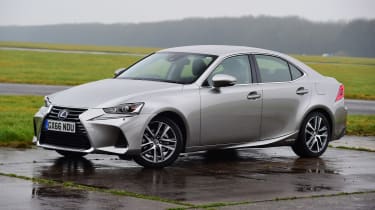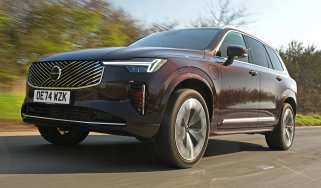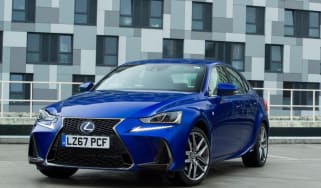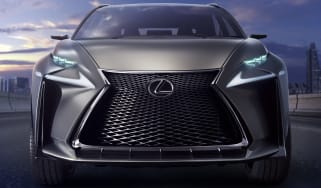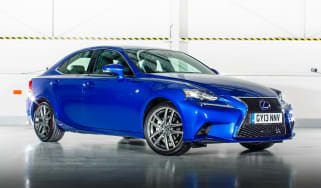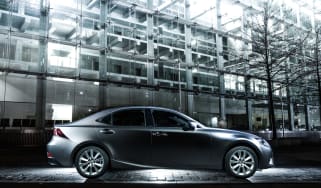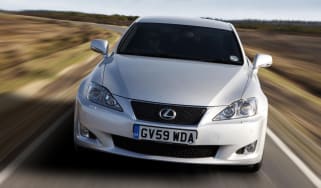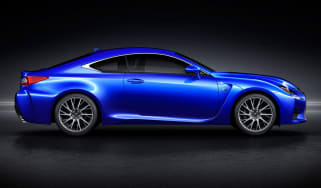Lexus IS saloon review (2013-2020)
"It might be a bit of an outsider in such a competitive class, but striking design and impressively low running costs make the Lexus IS worth a look"
Pros
- Smooth, quiet and comfortable ride
- Unimpeachable reliability record
- Low running costs
Cons
- Lack of diesel option
- Some rivals more fun to drive
- Performance not as strong as some rivals
The Lexus IS needed to be seriously good to go head-to-head with talented cars like the BMW 3 Series saloon, Audi A4, Mercedes C-Class, Jaguar XE and even the Volkswagen Passat and Skoda Superb. Each of these has its own particular appeal; the Lexus’ is the fact that it’s so different in execution to its rivals.
For starters, there’s no diesel option – akin to heresy in a class dominated by cars that drink from the black pump: only the IS 300h petrol-electric hybrid. That said, the hybrid – which combines a 2.5-litre four-cylinder engine and an electric motor – does offer diesel-esque running costs.
Lexus claims it’s capable of averaging around 65mpg and – in entry-level SE trim at least – has CO2 emissions of 97g/km. This means company-car buyers should like it thanks to a low Benefit-in-Kind (BiK) company-car tax rating.
All hybrid IS models also cost the lower rate in annual VED (road tax), but you'll need to be careful with the options: it's possible to specify the IS past the £40,000 mark, at which point an additional surcharge levy applies, making your yearly bill expensive in years two to six.
The hybrid's electric and petrol motors produce a maximum of 220bhp and it completes the 0-62mph sprint in 8.3 seconds. It tends to feel a bit slower in real-world driving though, because its CVT automatic gearbox causes engine revs to soar under hard acceleration, making the connection between pushing the throttle and picking up speed feel rather unconnected.
More reviews
In-depth reviews
A facelift updated the IS' looks, bringing a new ‘spindle’ grille, in keeping with the rest of the Lexus range, as well as fresh headlights and more pronounced front air intakes. The changes run to more than skin deep though, as while the engine range hasn’t altered, the suspension and steering have been tweaked to improve handling.
Inside, the infotainment screen has grown from seven to ten inches (though only if you go for a model with sat nav), and the fiddly Remote Touch Interface has been improved by the addition of an ‘enter’ button – though it’s still frustrating to use and takes time to learn.
At cruising speeds, the 300h is impressively smooth, quiet and comfortable, although the aforementioned CVT gearbox (continuously variable transmission) can cause the engine to drone as you overtake, join a motorway or drive up a hill.
All versions of the Lexus IS are rear-wheel drive, and the recent mechanical tweaks mean it's better on the road than was previously the case. The Jaguar XE and BMW 3 Series are still more entertaining, but the IS is – CVT gearbox and inert steering aside – confident, assured and not uninvolving on winding A-roads.
Standard equipment is decent, with the entry-level SE getting alloy wheels, a seven-inch infotainment touchscreen, a DAB radio, Bluetooth connectivity and LED rear lights. Upgrading from SE trim is advised though, as all other models come with the 10-inch infotainment display, sat nav and autonomous emergency braking.
A five-star Euro NCAP safety rating and a wide range of standard safety kit means safety shouldn’t be a concern, while Lexus’s reliability record is fantastic. The brand came first again in our 2020 Driver Power customer satisfaction survey, proving that its reputation for great customer service is no fluke.
See how this car scored on our sister site DrivingElectric.


